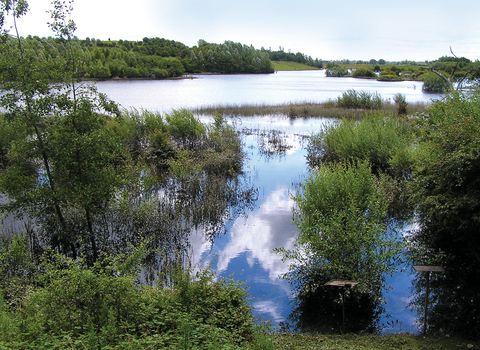
Fen Carr Nature Reserve - Jim Horsfall
Fen Carr Nature Reserve
Location
Know before you go
Dogs
When to visit
Opening times
The best way to appreciate all it has to offer is on one of our guided walks. Keep an eye out for dates on our website at ywt.org.uk/events otherwise please time visits in sympathy with traditional agricultural schedules. Contact the Trust for detailsBest time to visit
May to SeptemberAbout the reserve
Bountiful botany
Fen Carr is a floodplain meadow packed with plants. Comprising two traditional hay meadows, it was previously owned by the Church of England, which protected it from intensive farming. The land is grazed following a late haycut, and the hedgerows are protected and maintained.
Plants such as sneezewort, sweet vernal grass, great burnet and pepper saxifrage thrive, supporting a healthy population of moths and butterflies, including hairstreaks, browns, blues, coppers, whites and skippers. Green woodpeckers and curlews are two of the birds you might find
Contact us
About
Sympathetically farmed for nearly half-a-century by a local tenant farmer, Fen Carr comprises two traditional hay meadows that form art of the pastoral working landscape.
The nature reserve is of botanical importance, containing over 70 species of which many are locally rare as well as nationally declining. Sneezewort, sweet vernal grass and pepper saxifrage all grow at Fen Carr. These and others support a healthy population of butterfly and moth species including a number of browns, blues, coppers, hairstreaks, whites and occasional skippers.
Of the birds and mammals that visit the nature reserve of particular interest are curlew and green woodpecker.
A late haycut occurs, after which the land is grazed, usually by cattle. The Trust works to restore the hedgerows in addition to those that were recognised as important in an Enclosure Award (1825 Hatfield, Thorne and Fishlake Enclosure Award - please see below for background).
1825 Hatfield, Thorne and Fishlake Enclosure Award
Due to the 1825 Hatfield, Thorne and Fishlake Enclosure Award the owner of Fen Carr is required by Parliament to maintain ‘forever’ some of the hedgerows bordering the site.
The Award also decrees that the two little brick bridges at the entrances be maintained, and goes as far as to specify the depths and widths of all the ditches. These ditches are important, as the high water table here supports the wildlife present.
Seasonal highlights
- Spring: Invertebrates - Green hairstreak; Birds - Curlew; Green woodpecker
- Summer: Plants - Pepper saxifrage; Sneezewort; Sweet vernal grass; Invertebrates - Large skipper; Common blue
- Autumn: Fungi - Grassland fungi
- Winter: Mammals - Roe deer
Directions
Public transport
Train link available to Hatfield and Stainforth railway station from Doncaster railway station. Bus services run from Doncaster town centre.
By car
A mile after the hamlet of Fosterhouses the road turns sharply to the right. On the bend, an unsigned dirt track leads off to the left (Carr Head Lane). Parking is on the lane but with consideration to farm machinery. The nature reserve is about 200m up the lane on the right hand side.






